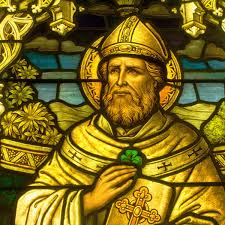
St. Patrick’s Day observes of the death of St. Patrick, the patron saint of Ireland. The holiday has evolved into a celebration of Irish culture with parades, music, dancing and drinking.
He was born to wealthy parents near the end of the fourth century and is believed to have died on March 17, around 460 A.D.
At the age of 16, Patrick was taken prisoner by a group of Irish raiders who were attacking his family’s estate. They transported him to Ireland where he spent six years in captivity. (There is some dispute over where this captivity took place. Although many believe he was taken to live in Mount Slemish in County Antrim, it is more likely that he was held in County Mayo near Killala.) During this time, he worked as a shepherd, outdoors and away from people. After more than six years in captivity, Patrick escaped. According to his writing, a voice – which he believed to be God’s – spoke to him in a dream, telling him it was time to leave Ireland.
To do so, Patrick walked nearly 200 miles from County Mayo, where it is believed he was held, to the Irish coast. After escaping to Britain, Patrick reported that he experienced a second revelation – an angel in a dream tells him to return to Ireland as a missionary. Soon after, Patrick began religious training, a course of study that lasted more than 15 years. After his ordination as a priest, he was sent to Ireland with a dual mission: to minister to Christians already living in Ireland and to begin to convert the Irish.

This year the St Patricks’ Day parade returns to Digbeth on Sunday 17 March, showcasing Irish traditional culture, music, dance and language and the contribution of the Irish community to Birmingham. The Birmingham parade dates back to 1952 and makes a welcome return after a five-year hiatus.
